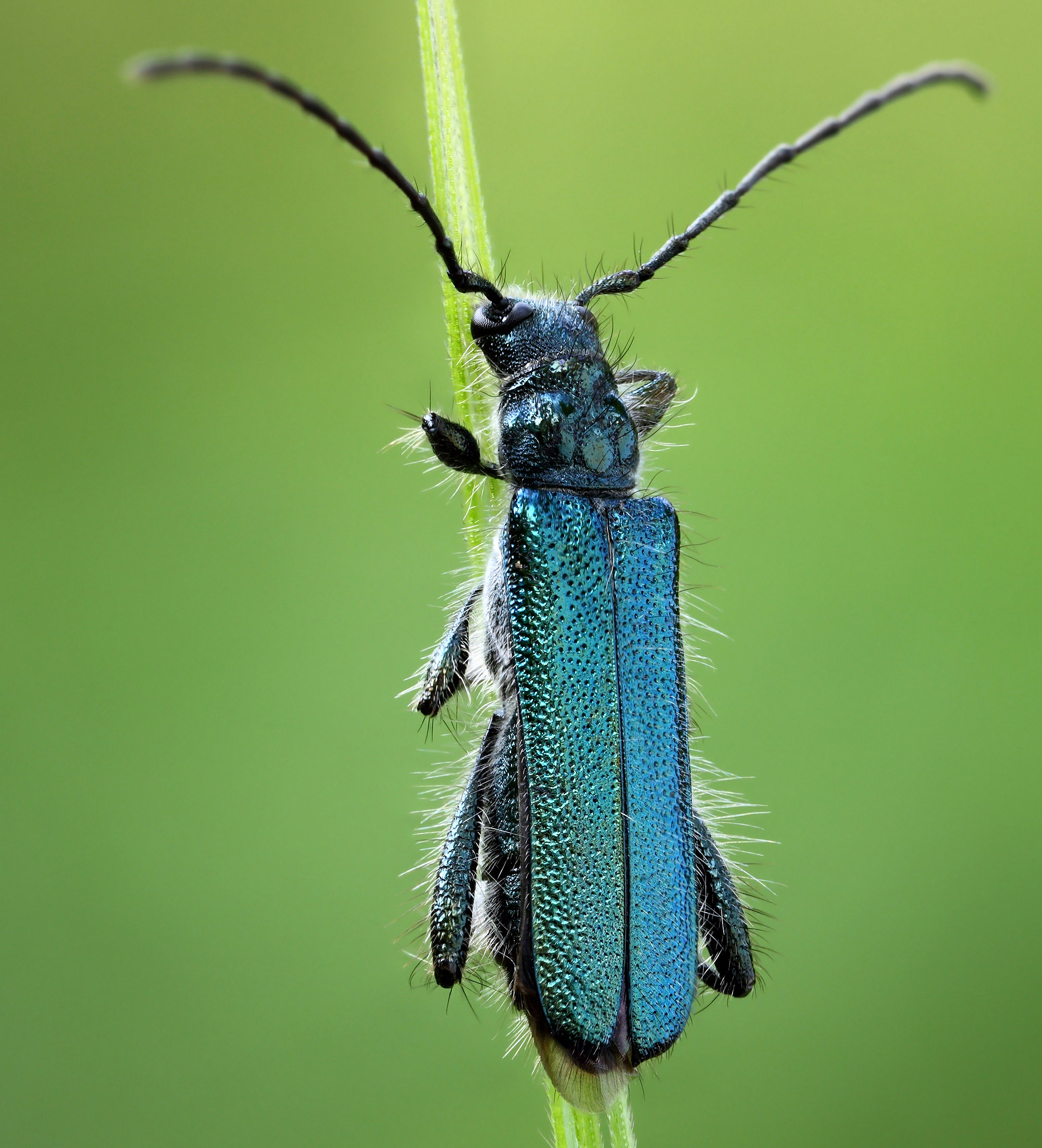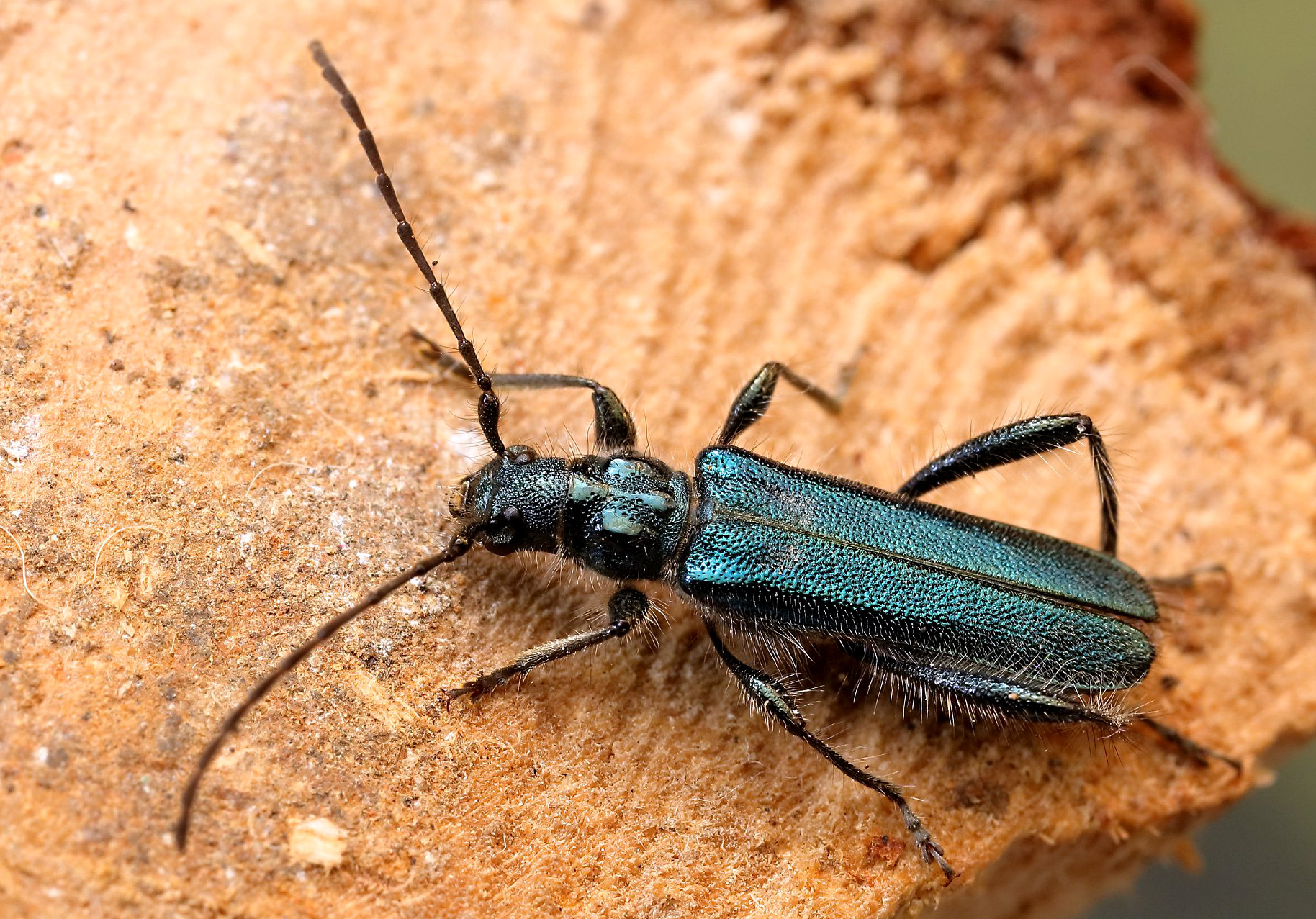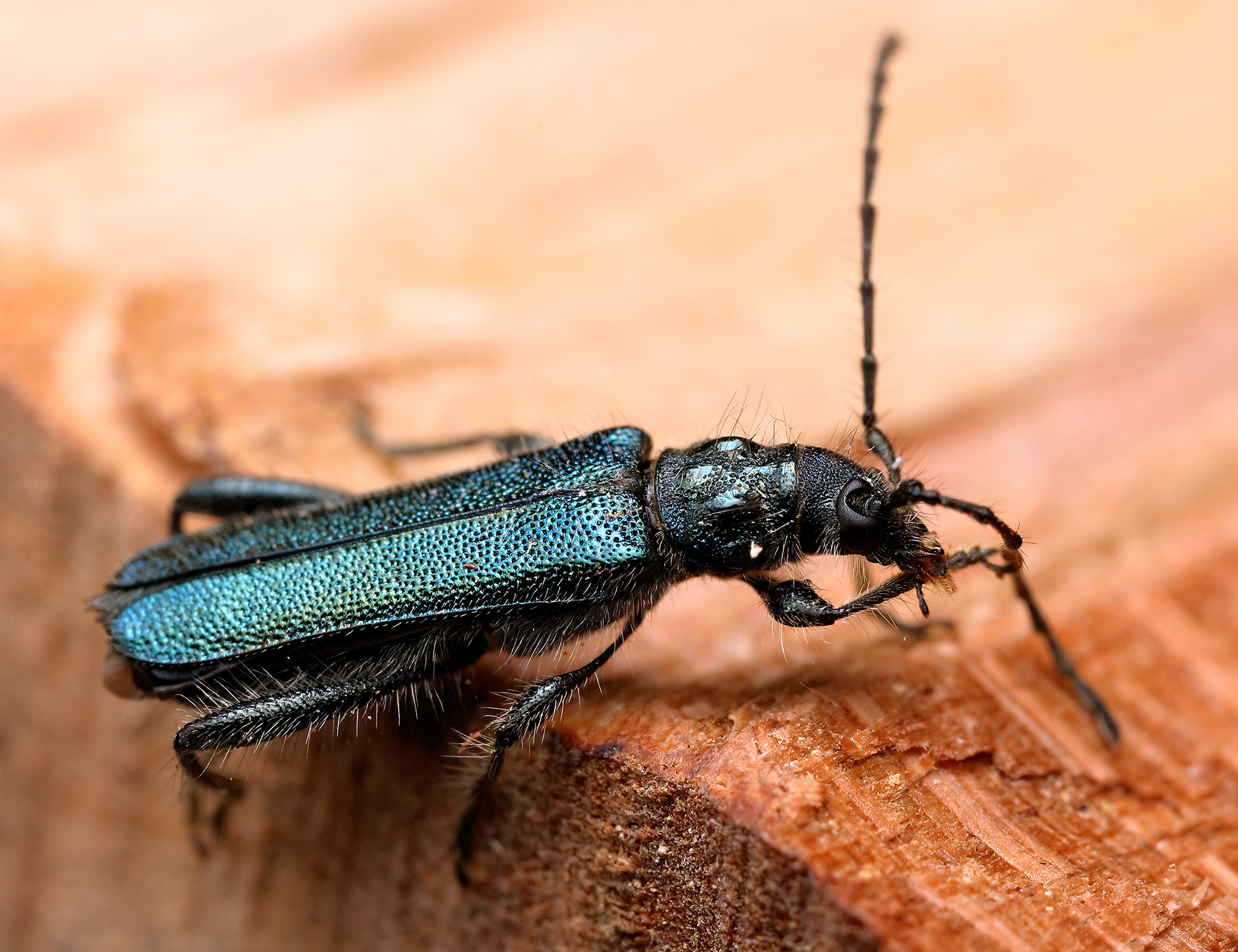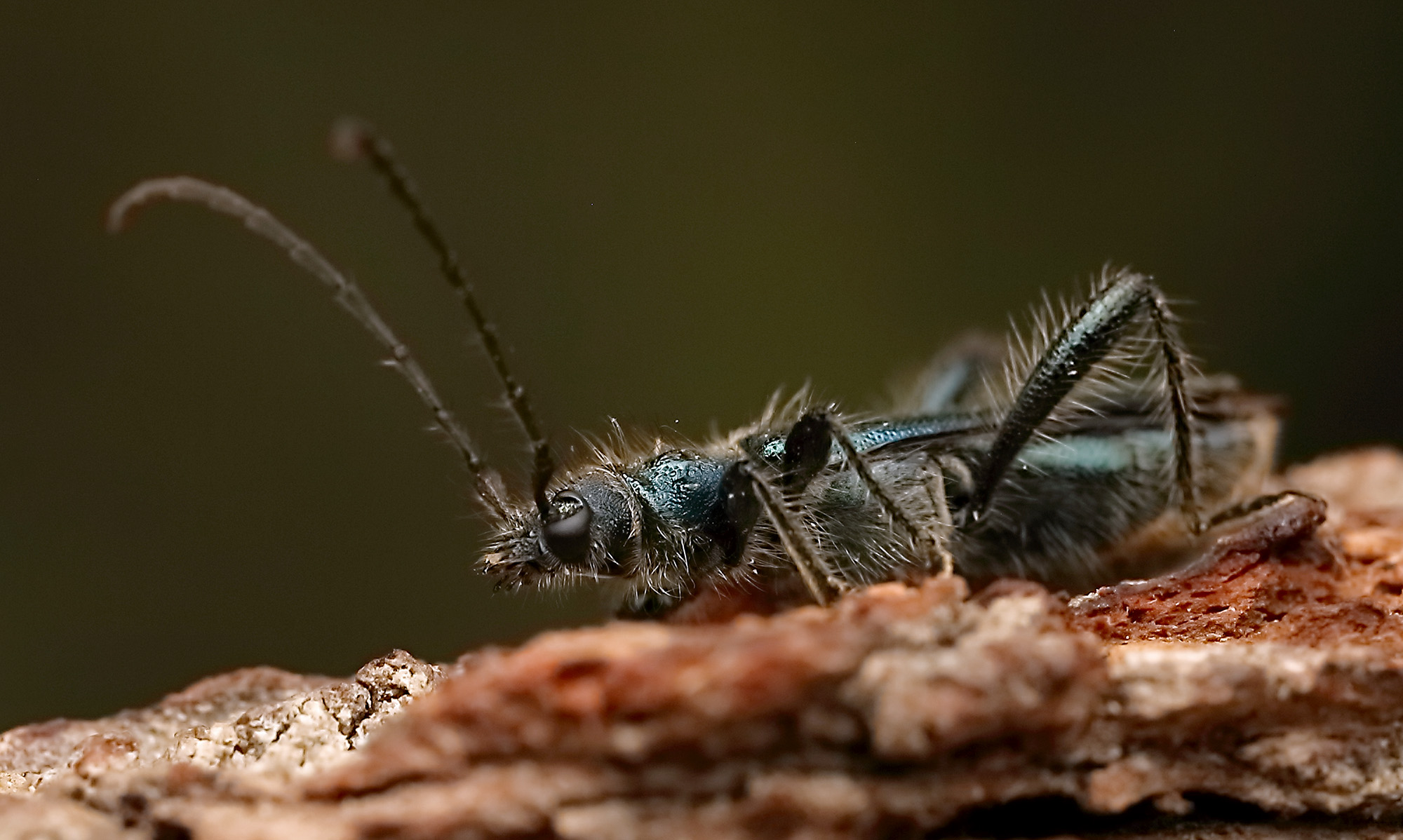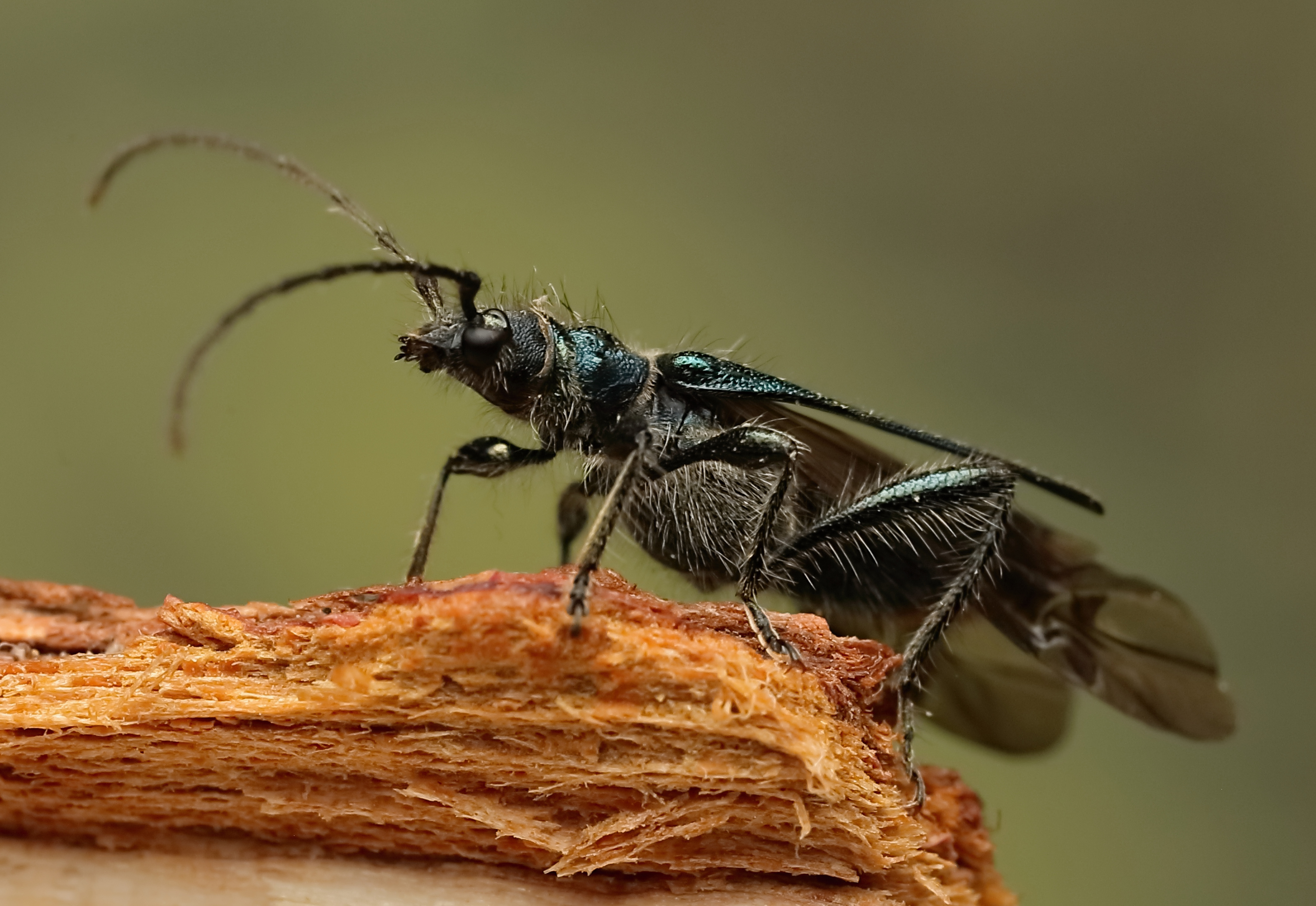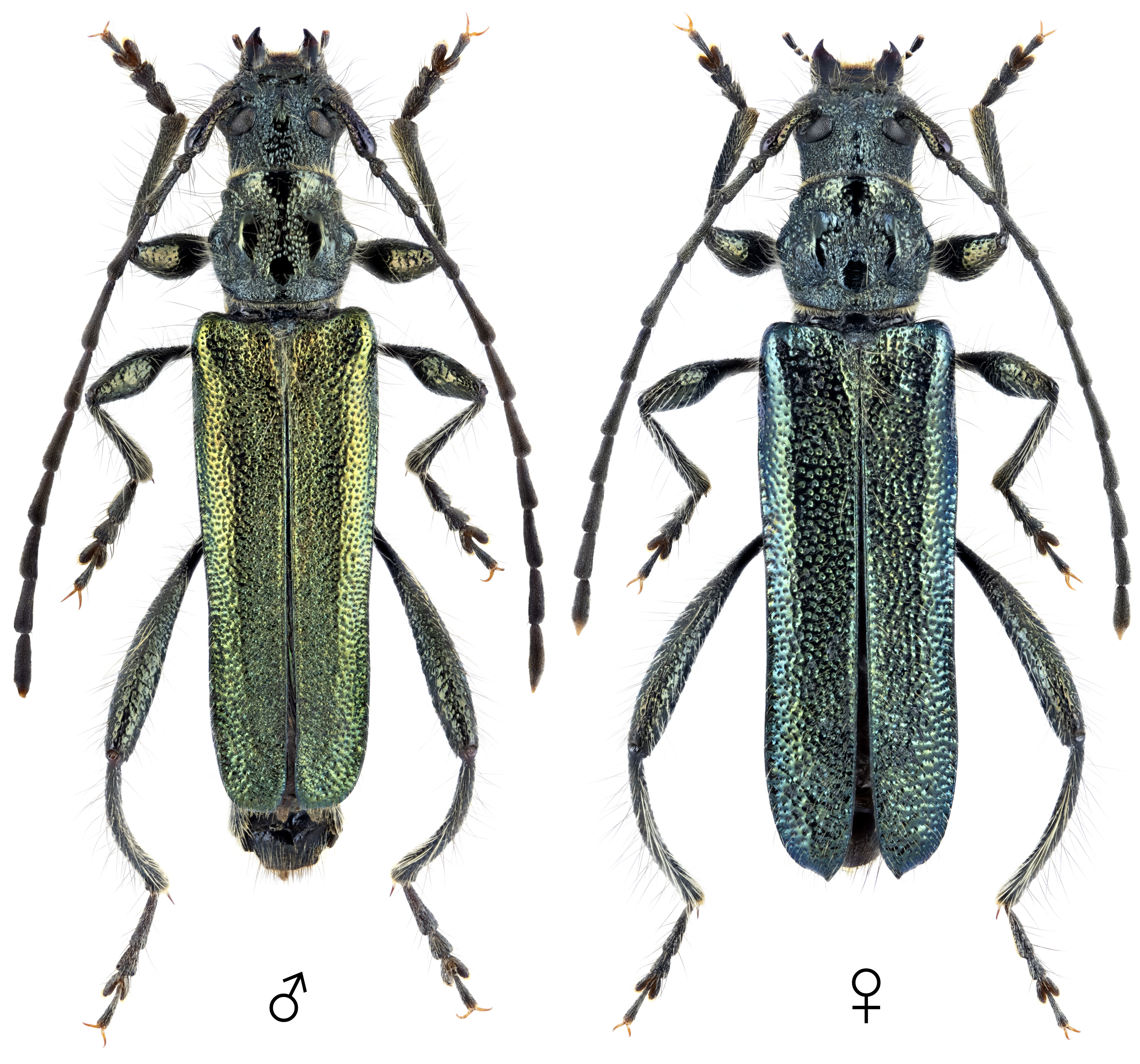
[Photo © David Navrátil, click on the picture for 4K resolution]
|
Callimus angulatus angulatus, a broadly distributed xerophilic species known from warmer regions of Europe, Maghreb, Near East, Caucasus/Transcaucaisa, Turkey and Iran, has been described from
Austria by Franz de Paula von Schrank in 1789 [▽]. C. angulatus angulatus is developing in freshly dead wood of thinner branches of deciduous trees about 2-8 cm in diameter.
The larva begins feeding under the bark and then continues into the wood. According to laboratory breeding, the development time is 1-2 years. Pupation in late summer or autumn, adults hatch after
a few weeks and hibernate in the pupal cells. Adults emerge from late April to June and can be beaten from the branches/leaves of the host trees or found on flowers (Crataegus, Rosa,
Apiaceae, etc.) [✯].
| Body length: | 7 – 10 mm |
| Life cycle: | 1 – 2 years |
| Adults in: | March – July |
| Host plant: | polyphagous in deciduous trees (Quercus, Fagus, Carpinus, Fraxinus, Crataegus, Ficus, Zelkova, Ostrya) |
| Distribution: | Algeria, Morocco, Albania, Austria, Bosnia and Herzegovina, Bulgaria, Croatia, Czechia (Bohemia, Moravia), France, Germany, Greece, Hungary,
Italy, North Macedonia, Romania, Russia, Serbia, Slovakia, Slovenia, Spain, Switzerland, Ukraine, Armenia, Azerbaijan, Georgia, Iran, Syria, Turkey, Turkmenistan |
The depicted living beetles were: (MP/ML) – reared from larva found in a dead oak branch (Quercus robur) in Křivoklátsko Protected Landscape Area (Central Bohemia, Czechia) in winter 2020;
(NR) – collected on flowers in Hungary on April 27, 2014.
The mounted specimens were collected in: ♂ – Trpejca (Трпејца) village invirons (N40°57′48″ E20°48′49″; 1400 m a.s.l.,
Galičica National Park, Ohrid municipality, Southwestern region, North Macedonia) on June 2–3, 2011; ♀ – Neraida (Νεράιδα) village environs (Pindos Mts., Karditsa regional unit, Thessaly, Greece) on May 19, 2016.
Collected by David Navrátil, Miroslav Polcar and Nikola Rahmé
|
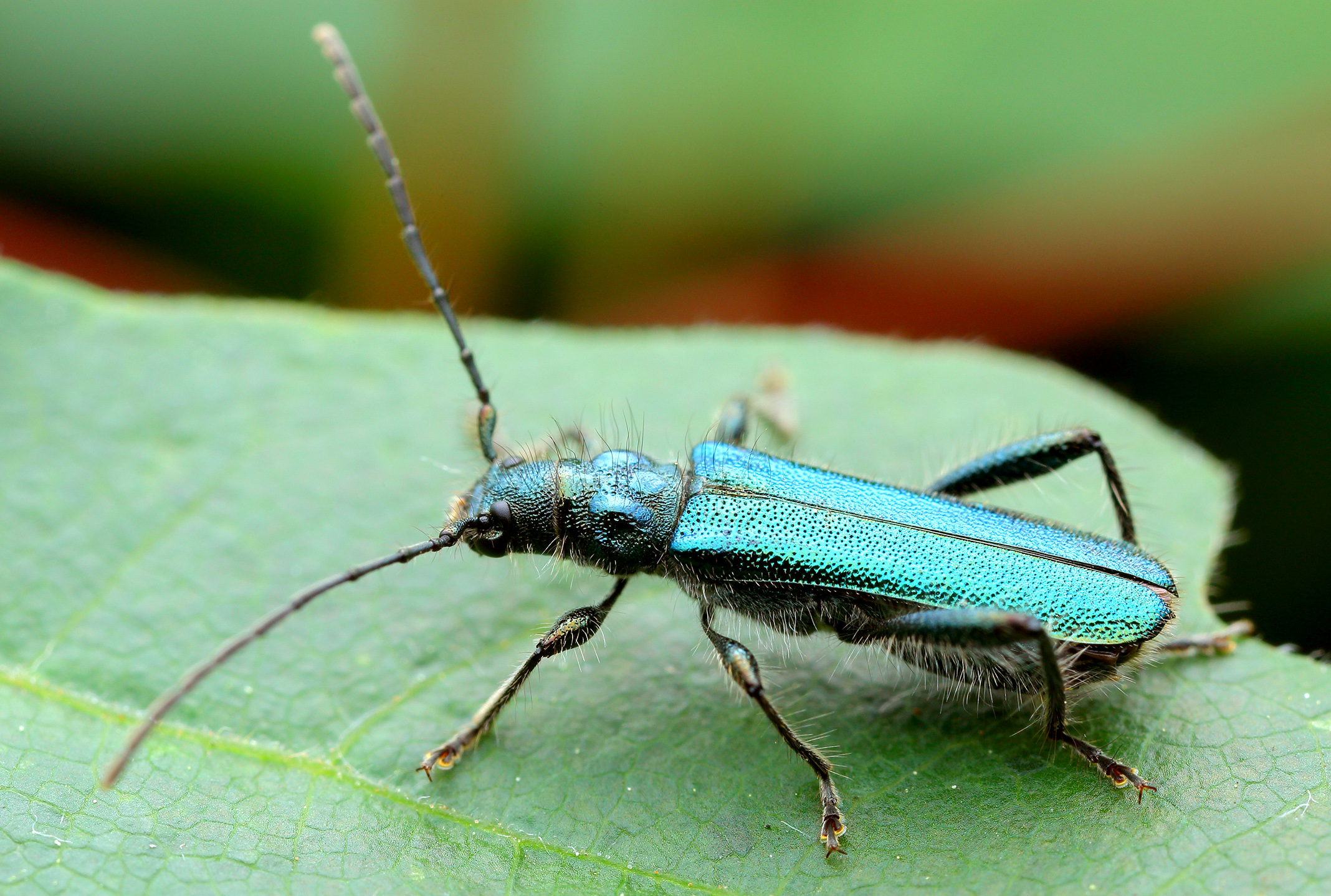

]
]

